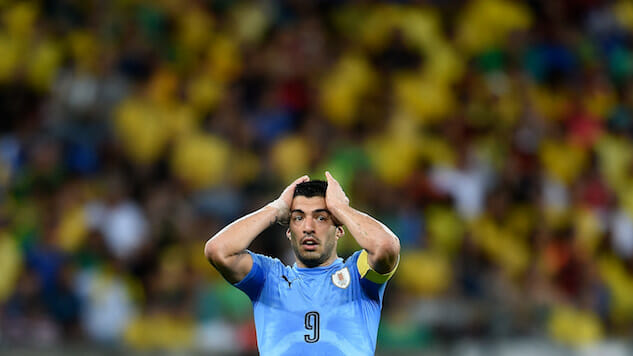Did Heavy Travel Take a Toll at the Copa America Centenario?
Photo by Buda Mendes
After losses to Venezuela and Mexico in the group stage of the Copa America Centenario, Uruguay—though eliminated—managed to save their blushes against Jamaica last night, winning 3-0. After several days crisscrossing America, what they didn’t manage to get was much rest.
For them, and many others participating in the Copa America Centenario, the extensive travel between group stage games may have had a direct impact on their results on the pitch.
Uruguay, a side that came in with hopes of potentially winning the tournament, opened their group stage games in Glendale, Arizona at the University of Phoenix Stadium on June 5th. They then flew 2,392 miles to Philadelphia for their next match on June 9th, just four days later. When that match was over, they hopped on another plane and flew 2,902 miles back west to Santa Clara, where they finished up their tournament with a game at Levi’s Stadium against Jamaica , another four days removed from their previous match. They traveled a total of 5,294 miles in a span of 9 days, while playing 3 games.
If you think that sounds extreme, Bolivia opened the tournament at Levi’s Stadium in Santa Clara on June 6th. Their next match was on June 10th at Gillette Stadium in Foxboro, MA. They finish up tonight at Century Link Field in Seattle. When that game is over, they will have traveled 6,174 miles over the course of the 9 day group stage. None of this matters now as they’re already eliminated, bottom of their group. Paraguay, another team who had hopes of progressing deep into the tournament, have had to travel 5,211 miles. Haiti covered 4,161 miles.
Of these teams, all but Uruguay have finished bottom of their group. All four teams also lead their group in total miles traveled during the group stage.
-

-

-

-

-

-

-

-

-

-

-

-

-

-

-

-

-

-

-

-

-

-

-

-

-

-

-

-

-

-

-

-

-

-

-

-

-

-

-

-









































